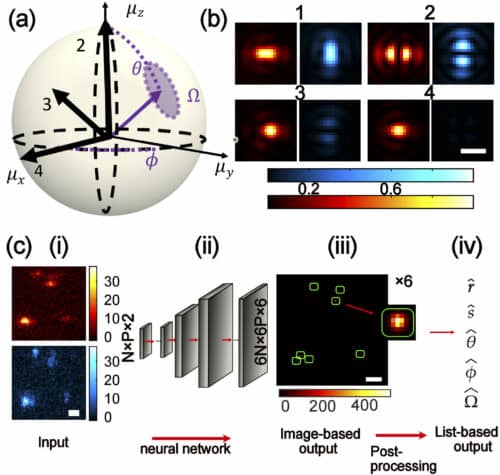Researchers have implemented a machine learning algorithm coupled with post-processing to sort out the orientation and position of overlapping single molecules in 5D from a single image

The study of biological processes is necessary to analyze how malfunctioning of these biological processes can lead to dangerous diseases, and assist you to develop and test possible treatments. Therefore, researchers in the lab of Matthew Lew, associate professor of electrical and systems engineering at Washington University in St. Louis have implemented a machine learning algorithm in a system that could tell the orientation of a molecule in 3D space as well as its position in 2D: five parameters from a single, noisy, pixelated image.
“A lot of people use AI end-to-end,” Wu a Ph.D. student in the McKelvey School of Engineering’s imaging sciences program said. “Just put in the thing you have and ask the neural network to give you the thing you want.” She decided to break the problem into two steps to lighten the load on the algorithm, making it more robust.
It was very difficult to image single molecules as they tend to be very “noisy,” containing “specks” or fluctuations that can obscure an image. For most machine learning neural networks, Lew said, “robustly dealing with that kind of noise can be very complicated to learn.”
As it is already known how signals from the molecules of interest and this noise are combined within microscope images. Instead of asking the algorithm to re-learn the laws of physics, the team added a second “post-processing” algorithm which is a straightforward computation that applies these physical laws to the results from the first algorithm.
“It’s like I’ve separated two problems into two algorithms,” Wu said. After processing thousands of snapshots, it resulted in a “beautiful image” that uses color, curvature, and direction to indicate how thousands of molecules are connected.
Wu envisions that this system will help researchers better understand biological processes at tiny scales—like how amyloid proteins assemble to form the tangled structures associated with Alzheimer’s disease.
Click for the Published Research Paper and Video





